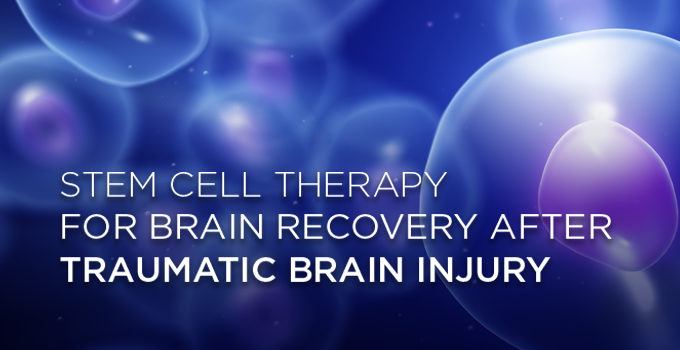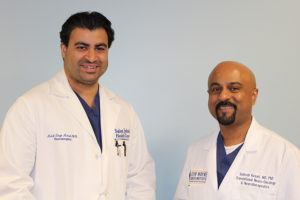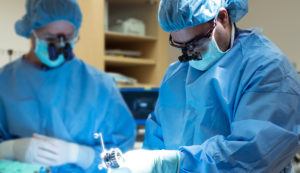

Can Stem Cells Repair Traumatic Brain Injury?
by Zara Jethani
A new clinical trial at Pacific Neuroscience Institute looks at the restorative properties of stem cells and how they can help patients recover after traumatic brain injury.
There’s a lot of buzz about stem cells, but what are they and can they really help in restoring health?
 In our bodies, adult stem cells are found in several areas such as muscles, skin, bone marrow and the brain. What makes them so valuable is that unlike any other cell type in the body, they can remain undifferentiated for a long time making more stem cells just like themselves. When the need arises to repair or generate tissues, they become capable of developing into cells with specialized functions such as blood or nerve cells. In high traffic areas like the gut or skin, stem cells are continuously at work whereas in other locations such as the brain, other cellular factors are involved in triggering the regenerative response.
In our bodies, adult stem cells are found in several areas such as muscles, skin, bone marrow and the brain. What makes them so valuable is that unlike any other cell type in the body, they can remain undifferentiated for a long time making more stem cells just like themselves. When the need arises to repair or generate tissues, they become capable of developing into cells with specialized functions such as blood or nerve cells. In high traffic areas like the gut or skin, stem cells are continuously at work whereas in other locations such as the brain, other cellular factors are involved in triggering the regenerative response.
The mysterious ways in which stem cells function are not yet completely understood, but this has spawned an exciting field of active scientific exploration. Regenerative medicine research has already demonstrated, however, that there is great potential in the use of stem cells as therapeutic allies in restorative treatments.

At Pacific Neuroscience Institute, neurosurgeon Achal Singh Achrol, MD and neuro-oncologist/scientist Santosh Kesari, MD, PhD, have opened a novel stem cell therapy clinical trial, which delivers stem cells for brain recovery after traumatic brain injury (TBI) in people who have had chronic motor deficits for over a year following TBI. As one of only six comprehensive sites in the United States offering this Phase 2 clinical trial, PNI is currently recruiting patients to assess the safety and efficacy of this novel therapy.
 Each year, an estimated 2.5 million people in the United States sustain a traumatic brain injury, and TBI-related causes contribute to a third (30.5%) of all injury-related deaths in the United States. There are many different types of traumatic brain injury including:
Each year, an estimated 2.5 million people in the United States sustain a traumatic brain injury, and TBI-related causes contribute to a third (30.5%) of all injury-related deaths in the United States. There are many different types of traumatic brain injury including:
- Concussions: The most common type of TBI, defined as a head injury with transient disturbance in brain function (e.g. loss of consciousness, altered mental status).
- Penetration injury: From bullets, shrapnel, and other objects entering the skull.
- Contusions: Bleeding that results from blows to the head.
- Diffuse axonal injury: Brain injury from traumatic shearing forces occurring with rapid acceleration or deceleration (e.g. motor vehicle accident, shaken baby syndrome).
During traumatic brain injury, the damage to brain tissues or disruption of blood supply to critical areas of the brain leads to brain cell death. When the neurons die, they cannot regenerate or be replaced and the areas of the body they control become disabled.
The TBI clinical trial involves the use of bone marrow-derived modified stem cells as repair agents. The investigational stem cells, called SB623, are delivered using a highly-specialized, minimally-invasive neurosurgery procedure using computer guidance to target the site of injury with the aim of helping resolve and reverse symptoms, such as an inability to move an arm or leg.
“Using minimally-invasive neurosurgery for precise stem cell delivery to specific regions of the brain, we hope to see clinical benefit through the wound healing aspects of these cells,” said Dr. Achrol, director of the neurosurgery clinical trials program at the Pacific Neuroscience Institute and Saint John’s Cancer Institute at Providence Saint John’s Health Center. “These stem cells secrete growth factors that have shown preclinical benefit, and also recruit the patient’s own stem cells through various homing signals. Recent successes with similar stem cell therapy trials in other diseases, such as for heart attack recovery, have generated increased interest in now using these approaches to treat brain injury.”
 Dr. Achrol, who was also the leading surgical Principal Investigator nationwide in an earlier study using SB623 in stroke patients with long standing motor deficits, is hopeful that these therapies will be successful. “We saw some very promising results in earlier Phase 1 and 2 stroke trials. It’s very encouraging to see a patient who was unable to move their arms years out from a stroke now able to lift their arm again after treatment, because there aren’t any other therapies that we’ve seen do that. It’s still very early in our understanding of these treatments, but those types of results make us hopeful about this new therapeutic approach.”
Dr. Achrol, who was also the leading surgical Principal Investigator nationwide in an earlier study using SB623 in stroke patients with long standing motor deficits, is hopeful that these therapies will be successful. “We saw some very promising results in earlier Phase 1 and 2 stroke trials. It’s very encouraging to see a patient who was unable to move their arms years out from a stroke now able to lift their arm again after treatment, because there aren’t any other therapies that we’ve seen do that. It’s still very early in our understanding of these treatments, but those types of results make us hopeful about this new therapeutic approach.”
More information about this trial can be found at clinicaltrials.gov (NCT02416492).
To find out if you are eligible for this breakthrough trial, please contact Najee Boucher at Najee.Boucher@Providence.org or 310-582-7460.
About the Author

Zara Jethani
Zara is the marketing director at Pacific Neuroscience Institute. Her background is in molecular genetics research and healthcare marketing. In addition, she is a graphic designer with more than 20 years experience in the healthcare, education and entertainment industries.
Last updated: November 19th, 2021